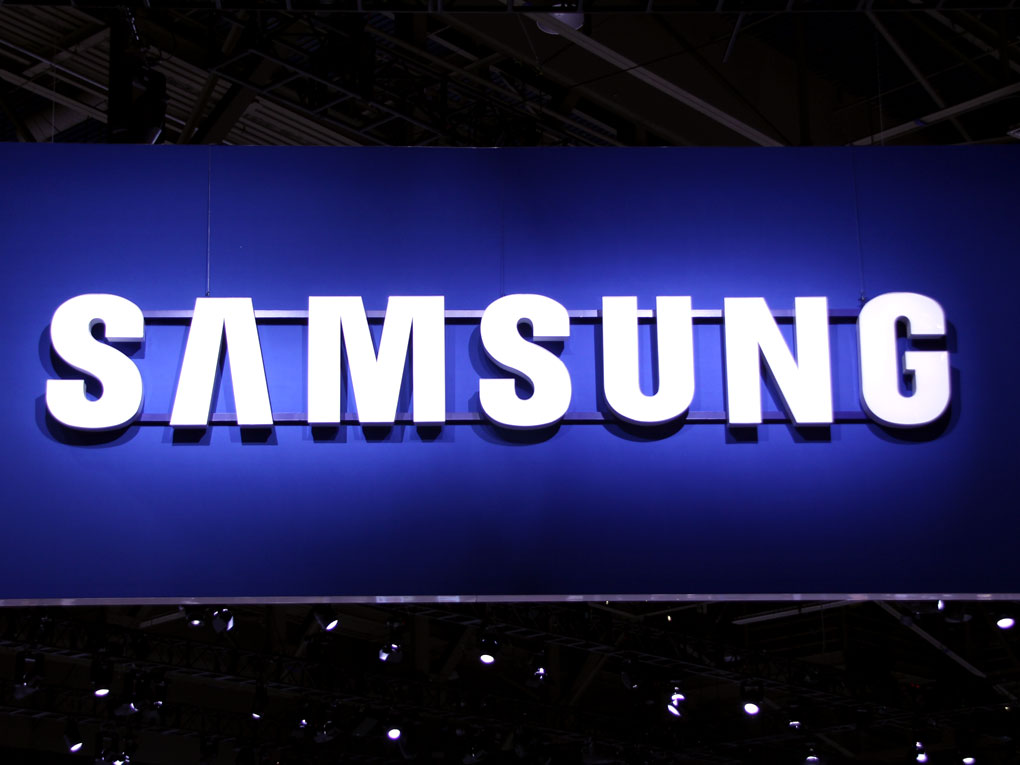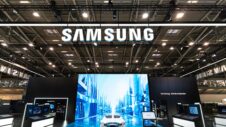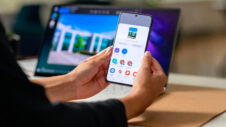Just a few years back, Nokia was a word synonymous with mobile phones. Prior to 2012, for more than a decade, Nokia was the undisputed leader in the mobile market by a huge margin. During this period, Nokia’s dominance of the world mobile market was so commanding that it was beyond anyone’s realm of logical reasoning to predict Nokia’s downfall in the near future. Yet, to everyone’s disbelief, it happened and happened more quickly than even a pessimist would have thought. So volatile is the nature of technology business, travel time from top to bottom or vice versa, is both short and abrupt.
It is Nokia who lost the most in the smartphone revolution spurred by Android and IOS. It has been a story of tragedy for Nokia from being the world’s largest manufacturer of phones to being acquired by Microsoft. Undoubtedly, Nokia was the pioneer in smartphones before the advent of IOS and Android platforms, but the launch of these platforms radically transformed the Nokia’s Symbian OS from a competitive advantage to disadvantage. Nokia’s aged Symbian OS couldn’t match these modern platforms in spite of Nokia pushing multiple cosmetic updates. While time is just precious elsewhere, its oxygen in this industry. Nokia squandered precious time in trying to revive Symbian, experimenting with MeeGo, and then adopting the just born Windows Phone OS (WP OS) without any ecosystem to rival other matured platforms. Till the roll out of WP 8 OS which brought the bare basic requirements for the platform to even stay relevant, Nokia literally gifted away Samsung with precious 2-3 years of time to sell millions of smartphones with least or no resistance. So, now that the WP OS meets the basic criteria to be classified as a workable alternative by the customers, and Nokia free from all financial troubles and constraints, can it regain its supremacy under the management of Microsoft? Can Nokia deliver any serious blow to Samsung in 2014? The answers are more platform dependant than manufacturer centric.
In reality, the contest between Nokia and Samsung in 2014 simply translates into a fight between WP OS and Android. Since Samsung is the most dominant player in the Android market, and Nokia virtually has monopoly over WP ecosystem, it is safe to assume that any customer choosing Android over WP is probably a customer lost for Samsung and a customer gained by Nokia. Though WP OS enters 2014 as a far more matured OS than what it was couple of years ago, it’s still a no match for Android OS used by Samsung smartphones. So, if Microsoft can up the ante for WP OS in 2014 in terms of app ecosystem and feature set, and position it as a viable alternative to Android, then Nokia can pose serious threat to Samsung’s smartphone dominance. As of now, for those who are deeply invested in Android or Google services, even exceptional Lumia smartphones in 2014 won’t count as options, and that’s something which might work in Samsung’s favour. But, for those minor segments that don’t care much about the ecosystem, Lumia phones can be compelling options for their unibody industrial designs, best smartphone cameras, lag free budget experience, and fresh appeal of the OS.
In spite of the growth of Android and IOS, none of them succeeded in replacing the ailing BlackBerry as a clear alternative in the enterprise segment. This presents a valuable opportunity for the WP OS to make a big push in the enterprise segment by ensuring a tight and seamless integration between the WP OS and the Windows PC OS. If Microsoft can deliver such updates to the WP OS in 2014, it will present the Windows Phones a greater opportunity of replacing BlackBerry. With the global economy heavily dependent on Windows PC ecosystem, Windows Phones have the potential to offer far greater synergy and integration relevant for the enterprise segment. Considering WP OS has the same core as its desktop counterpart, development of apps for both the Windows platforms becomes much easier. All this might hurt Samsung‘s intentions in 2014 to capture the enterprise segment with their Knox platform for the Samsung smartphones. Of course, considering the licensing model of WP OS, even Samsung can make Windows Phones, like they did in the past, if the platform really attracts customers or enterprises. However, if Microsoft decides to play the favouritism or Nokia exclusive strategy, it might create obstacles for Samsung in the Windows Phone ecosystem.
Even though Nokia lost market share by leaps and bounds, the spirit of innovation still continues. Over the last couple of years, Nokia has invested heavily in their smartphone camera space, and has impressed the industry with its PureView smartphone cameras. In midst of identity crisis, Nokia has reinvented itself as the company that makes the best smartphone cameras. This should definitely be a cause of concern for Samsung and Android in general, as finding an Android smartphone with fast and fantastic camera has always been a difficult job. It is Samsung, who usually fared better than other Android phone manufacturers in addressing the camera centric market segments. But, with Nokia launching Lumia PureView smartphones, which leaves the competition behind by a huge margin, it is sure to attract more Apple and Samsung customers who are pure camera enthusiasts. The fact that WP OS is getting more matured in terms of the app ecosystem, a criticism it constantly faces, will help the camera enthusiasts make this transition without too many app sacrifices. In the light of all this, in 2014, products like Samsung Galaxy S4 and S4 Zoom will not be an easy sell against the refined design and capabilities of the Nokia phones like Lumia 1020.
Supplementing all this momentum is the latest GDR3 update to WP OS which now supports full HD screens, quad core processors, and phablet screen sizes – finally allowing Windows Phones to be on par with Android phones in terms of hardware specifications. By removing the crippling restrictions for using the latest hardware, Microsoft is giving the flagship Windows Phones a better chance to attract customers who stayed away from the platform due to relatively outdated hardware. Along the same lines, if Microsoft can plug-in the key missing features like the notification centre, file manager, voice assistant etc through the promised WP OS 8.1 update in 2014, then it can surely project WP OS as a compelling alternative to other platforms. These changes can help the WP devices overcome the set of key deficiencies currently encountered. Of course, none of this translates into an exclusive benefit for Nokia as WP devices can even come from Samsung, not just Nokia. However, it seems to be an unlikely proposition in the near future, given how deeply Samsung is invested in Android along with actively developing Tizen OS.
It is not just the developments in WP ecosystem or the acquisition by Microsoft which will make Nokia a formidable player in 2014. Interestingly, it’s the strengths built by Nokia during the period of its long dominance that makes it a good fit for the upcoming opportunities in 2014. All the predictions for the smartphone industry in 2014 point towards rapid growth in the emerging markets; demand in the mid to low range price segments; competition in the wearables space; and developments in smartphone integration across various products and appliances. Nokia has great advantage to capitalize many of the opportunities predicted for 2014.
During the decade of dominance, Nokia has built a very robust sales and after sales network across all the major markets around the world, and most this foot print is still intact. Nokia is still a very dominant player in the emerging markets, particularly in the low end feature phones and smart phones. Even though Nokia lacks the kind of vertical integration Samsung has over its manufacturing to achieve the benefits of scale, cost, and control, it has still succeeded over the years in offering multiple products, at different price points, and for different customer segments. Considering the markets and segments which are expected to drive growth in 2014, Nokia has a huge opportunity to stage a dramatic comeback. What might also greatly help Nokia in this endeavour is the fact that under Microsoft, Nokia can effectively counter the marketing spend of Samsung. On the wearables side, Nokia still hasn’t shown any glimpses of its work, and it appears Samsung has a definite advantage here, no matter how small it is. However, the biggest advantage for Samsung over Nokia and many other manufacturers lies in its wide product portfolio across categories, which presents a valuable opportunity to create an ecosystem of Samsung products covering many aspects of human life. Although this advantage may be insignificant in 2014, it’s still a golden opportunity worth noting.
Microsoft’s acquisition of the Nokia’s mobile division is the most significant event in 2013 in the mobile industry. The ramifications of this acquisition, which is supposed to be complete in early 2014, can vary drastically depending how aggressively Microsoft wants to push WP ecosystem. The extent of threat this acquisition poses to Samsung depends upon how Microsoft wants to treat Nokia once the acquisition is complete, and how different is that treatment for other manufacturers willing to license WP OS. Traditionally, smartphone manufacturers made money by selling their products at a profit, but over the past couple of years, Nexus devices from Google and Kindle range from Amazon have sidelined this strategy to aggressively push their platforms. They usually sell their devices at cost price without any profit at the time of sale. The strategy followed here is to reduce the barriers to entry into the ecosystem by selling the devices at cost; getting more and more customers locked or invested in the ecosystem; and generate profits from these customers in the long run through various services offered by the company behind the ecosystem. While this strategy might work wonders for Google and Amazon, they simply kill smartphone manufacturers like Samsung, HTC, Sony etc as selling phones at a profit is the only viable revenue model they have. Being aware of this, Google is conservative with Nexus devices in an attempt to play nice with these manufacturers, who might otherwise abandon the ecosystem.
In the case of WP ecosystem, even though it’s open to licence for other manufacturers, it’s only Nokia who matters as it accounts for more than 90% of the WP market share. Now that Nokia will be under the cash rich Microsoft, even if Microsoft wants to adopt the Nexus and Kindle’s strategy, it has very little to lose in the form of other manufacturers abandoning the ecosystem. So, contrary to what Microsoft has been promising so far, if it decides in 2014 to sell the phones made by Nokia at cost or extremely compelling price points to aggressively push the platform and generate profits in the long term, then it could mean serious loss of market share for Samsung, and probably survival threat for few other manufacturers relying solely on hardware for profits.
All this analysis clearly emphasizes the fact that Nokia could pose serious competition to Samsung’s smartphone dominance in 2014. However, the intensity of the threat squarely depends on how Microsoft wants to play around with Nokia. Unless Samsung has a game plan for 2014 which is different than the one for 2013, countering the blow from Nokia and WP OS in general could prove to be more difficult than ever for Samsung. Remember! Nokia itself is the prime example for anyone who thinks Samsung has grown too big to fail. Let’s hope both the companies put their best show for the demanding audience in 2014.
This article was written by our guest blogger, Naresh Nekkanti (you can follow him at @nekkantinaresh on Twitter), and will be part two of a multi-part series of articles analyzing Samsung’s challenges in 2014, and its stand among the competition.







